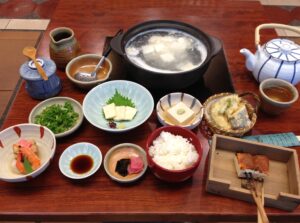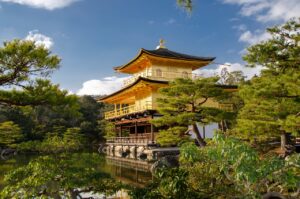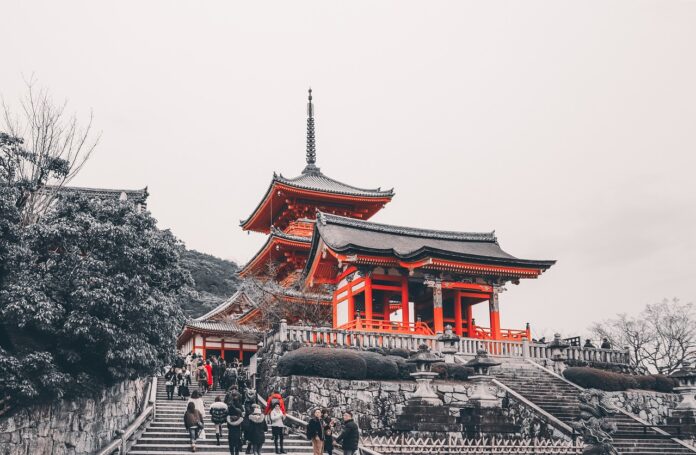Once the imperial capital of Japan for over a thousand years, Kyoto is a city that exudes history and tradition. Its ancient temples, beautiful gardens, traditional tea houses, and geisha culture make it a place like no other. This guide will walk you through the cultural richness, culinary delights, intriguing trivia, top places to visit, and essential travel tips for Kyoto.
Culture: Kyoto is often considered the cultural heart of Japan. It's a city where traditional Japanese culture has been preserved and thriving. Here you can witness the age-old customs of tea ceremonies, partake in traditional arts and crafts, or watch a kabuki performance. The city is also renowned for its geisha culture, particularly in the Gion district, where you can spot geishas in their exquisite kimonos.
Food: Kyoto's culinary scene is as rich as its cultural heritage. Some must-try dishes include Kaiseki (traditional Japanese multi-course meal), Yudofu (tofu hot pot), Matcha (green tea) flavored sweets, and Saba-sushi (mackerel sushi). The city is also famous for its pickles and tofu. Don'tMake sure to try Yatsuhashi, a sweet cinnamon-flavored snack and a popular souvenir.

Interesting Facts:
- Kyoto was spared from air raids and the atomic bomb during World War II due to its cultural significance.
- Seventeen sites within the city are recognized as UNESCO World Heritage Sites.
- Kyoto is home to over 1600 Buddhist temples and 400 Shinto shrines.
- Kiyomizudera Temple's main hall was constructed without using a single nail.
Top Places to Visit:
- Kinkaku-ji (Golden Pavilion): This temple, belonging to the Zen Buddhist tradition, is adorned with gold leaf and is encompassed by picturesque gardens and a pond that mirrors its surroundings.
- Fushimi Inari Taisha: Renowned for its myriad of vivid red torii gates, this Shinto shrine is an essential destination for visitors.
- Arashiyama Bamboo Grove: Stroll through the towering bamboo stalks and visit the nearby Tenryu-ji Temple.
- Gion District: Explore this historic district, known for its traditional wooden machiya houses and geisha culture.
- Kiyomizu-Dera: This iconic temple offers stunning views of Kyoto, particularly during cherry blossom season and autumn foliage.
- Nijo Castle, adorned with exquisite interiors and gardens, is a UNESCO World Heritage Site.
- Philosopher's Path: This stone path along a canal is lined with cherry trees and is perfect for leisure.
- Nishiki Market: Known as "Kyoto's Kitchen," this market is the best place to try local foods and buy souvenirs.
- Ryoan-ji Temple: Visit this Zen temple to see its famous rock garden, which symbolizes elegance and simplicity.
- Kyoto Imperial Palace: This grand palace was the residence of Japan's Imperial Family until 1868 and is surrounded by stunning gardens.

Travel Tips:
- Kyoto Sightseeing Card: Consider purchasing a Kyoto Sightseeing Card for unlimited travel on buses and subways and discounts at attractions.
- Respect Local Customs: Always respect local customs, especially in temples and shrines. Follow the etiquette, such as washing hands before entering shrines.
- Don Comfortable Footwear: Since exploring Kyoto entails extensive walking, wearing shoes that offer comfort is imperative.
- Plan According to Seasons: Each season offers a different experience, with cherry blossoms in spring and vibrant leaves in autumn. Plan accordingly.
- Make Dining Reservations: If you want to experience a traditional Kaiseki meal or tea ceremony, make reservations in advance.
- Rent a Kimono: For an immersive cultural experience, consider renting and wearing a traditional kimono while exploring the city.
Kyoto is the epitome of Japan's rich history and culture. Its awe-inspiring temples, enchanting streets, and mouth-watering cuisine make it an unforgettable destination. Whether you're a history enthusiast, nature lover, or foodie, Kyoto has something for everyone. Dive into the deep heritage of this majestic city, and allow yourself to be transported through time and tradition.















